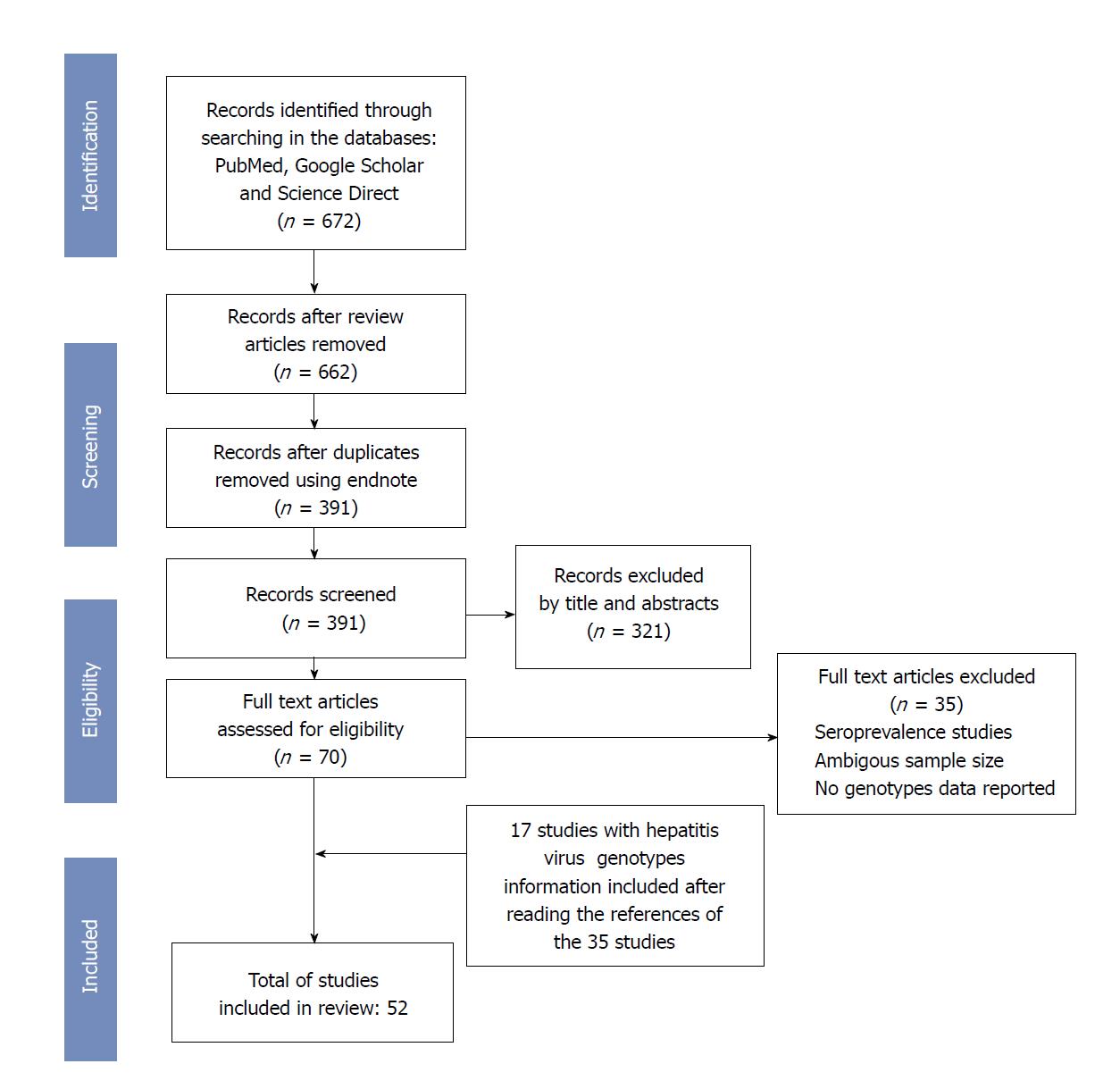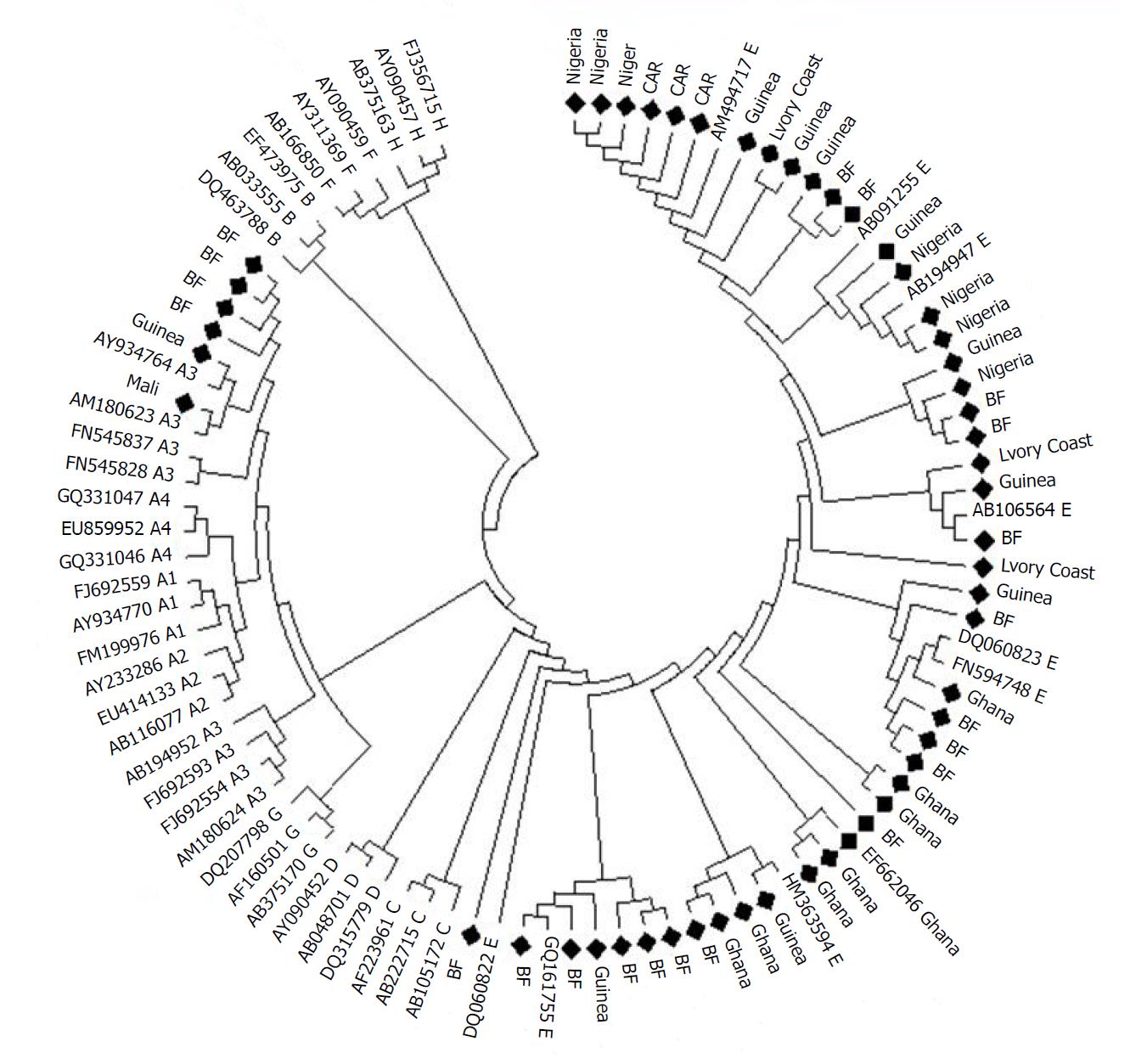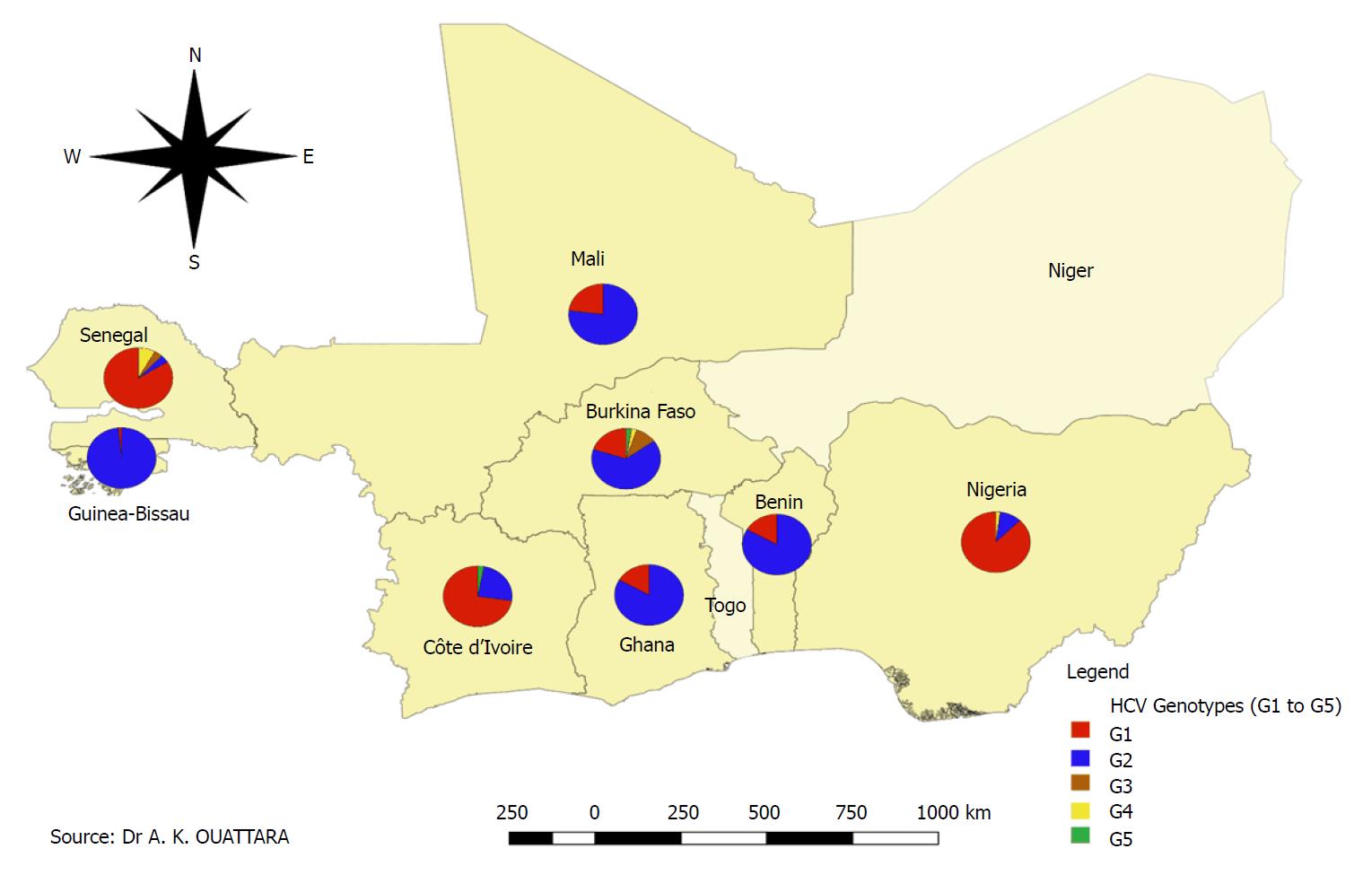Copyright
©The Author(s) 2018.
World J Hepatol. Nov 27, 2018; 10(11): 807-821
Published online Nov 27, 2018. doi: 10.4254/wjh.v10.i11.807
Published online Nov 27, 2018. doi: 10.4254/wjh.v10.i11.807
Figure 1 Flow diagram showing the method for the study selection.
The database search for the search strategy described in the section was cleaned up to exclude review articles and duplicates. Titles and abstracts were included in the literature review. Seroprevalence articles, articles with ambiguous data that did not meet the inclusion criteria were then excluded during the full-text review. Fifty-two (52) relevant articles were finally included for this review.
Figure 2 Phylogenetic tree of 53 hepatitis B virus genotype E and A sequences identified in West African Economic and Monetary Union countries including Ghana and Nigeria (indicated ♦).
Phylogenetic analysis was performed with the neighbor-joining algorithm based on the Kimura two-parameter distance estimation method. Only bootstrap values of > 80% are shown (1.000 replicates). Reference hepatitis B virus sequences (44) recovered from GenBank are denoted with their accession numbers and genotypes/sub-genotypes are indicated.
Figure 3 Hepatitis B virus genotypes reported in West African Economic and Monetary Union countries, Ghana and Nigeria.
Pie charts show the proportion of different hepatitis B virus genotypes in West African countries according to the data in Table 1.
Figure 4 Hepatitis C virus genotypes reported in West African Economic and Monetary Union countries, Ghana and Nigeria.
Pie charts show the proportion of different hepatitis B virus genotypes in West African countries according to the data in Table 2.
- Citation: Assih M, Ouattara AK, Diarra B, Yonli AT, Compaore TR, Obiri-Yeboah D, Djigma FW, Karou S, Simpore J. Genetic diversity of hepatitis viruses in West-African countries from 1996 to 2018. World J Hepatol 2018; 10(11): 807-821
- URL: https://www.wjgnet.com/1948-5182/full/v10/i11/807.htm
- DOI: https://dx.doi.org/10.4254/wjh.v10.i11.807












